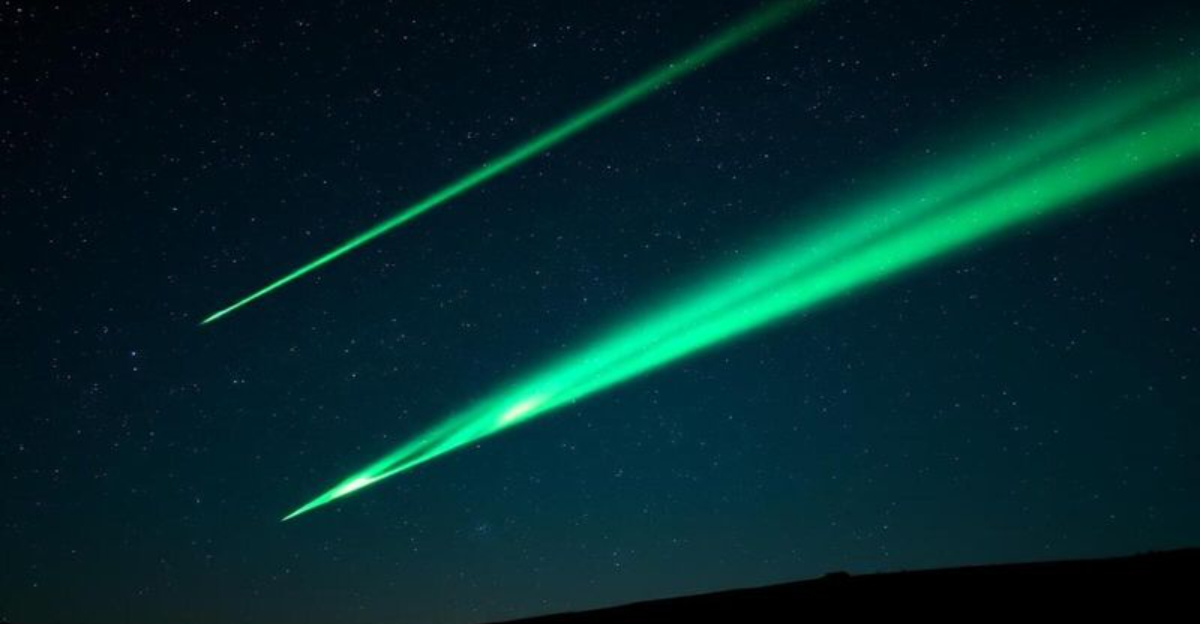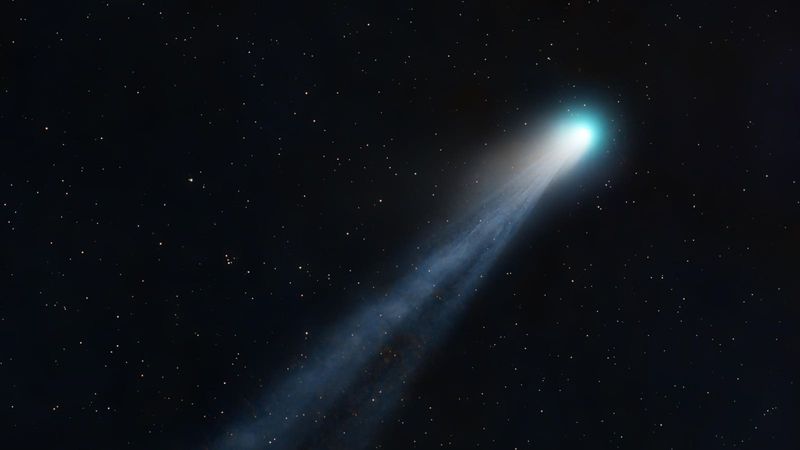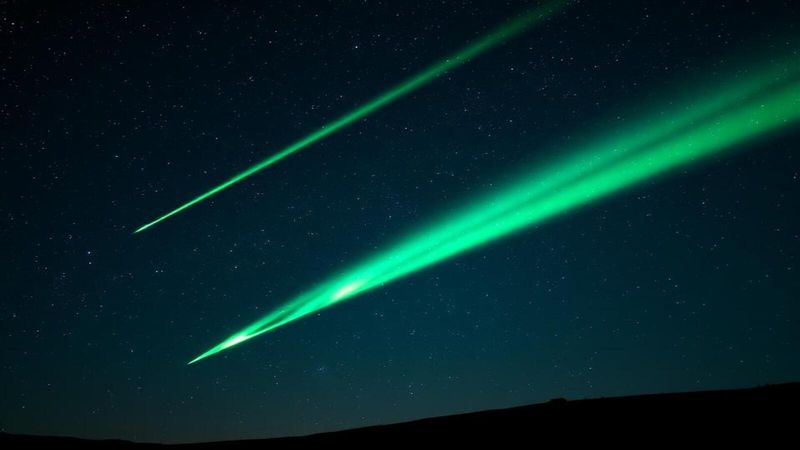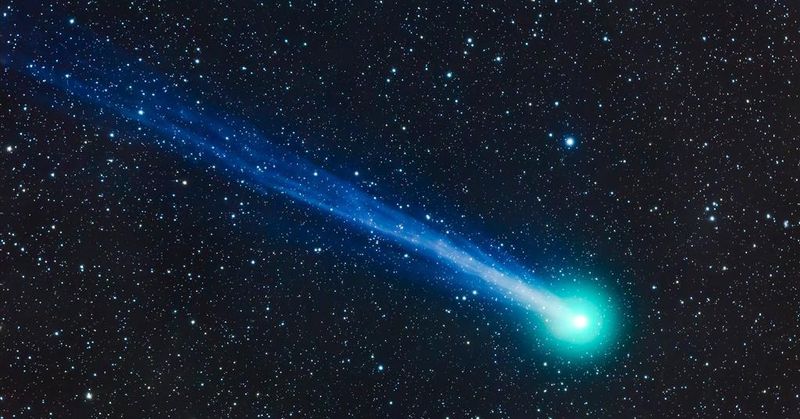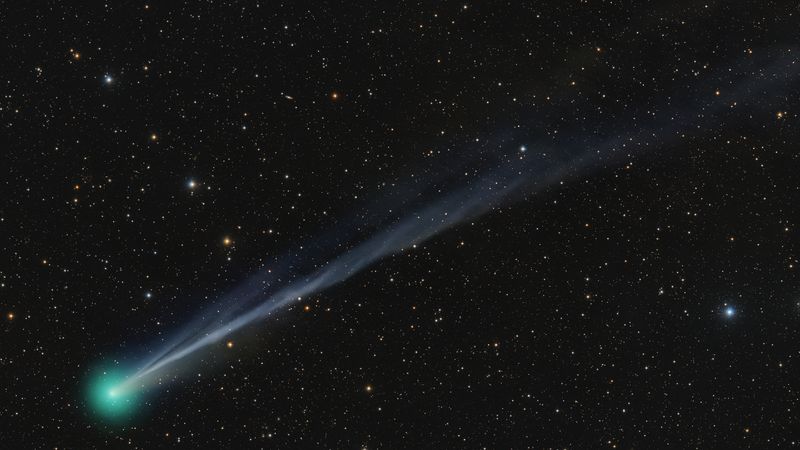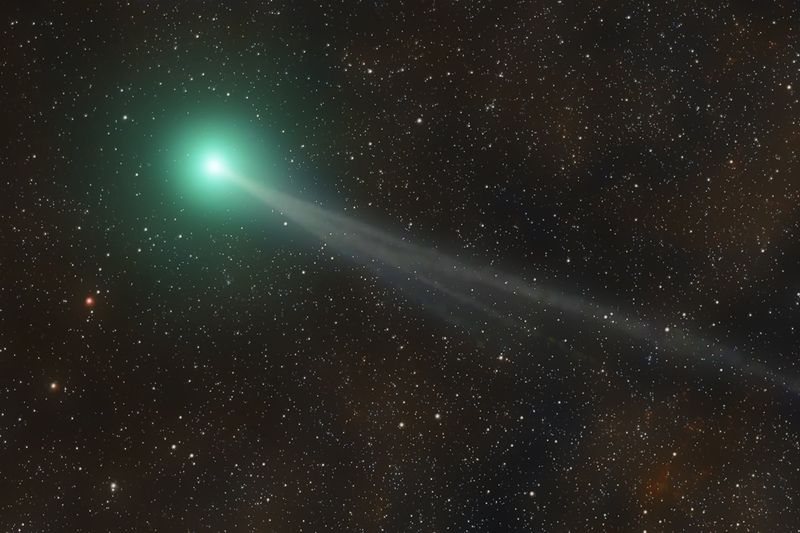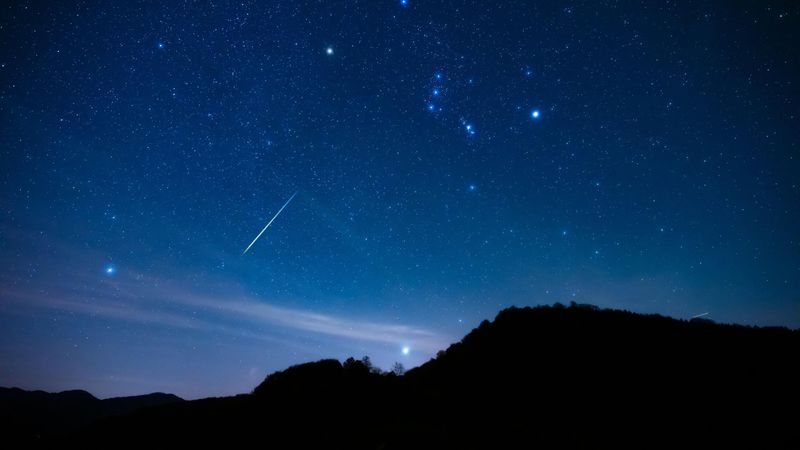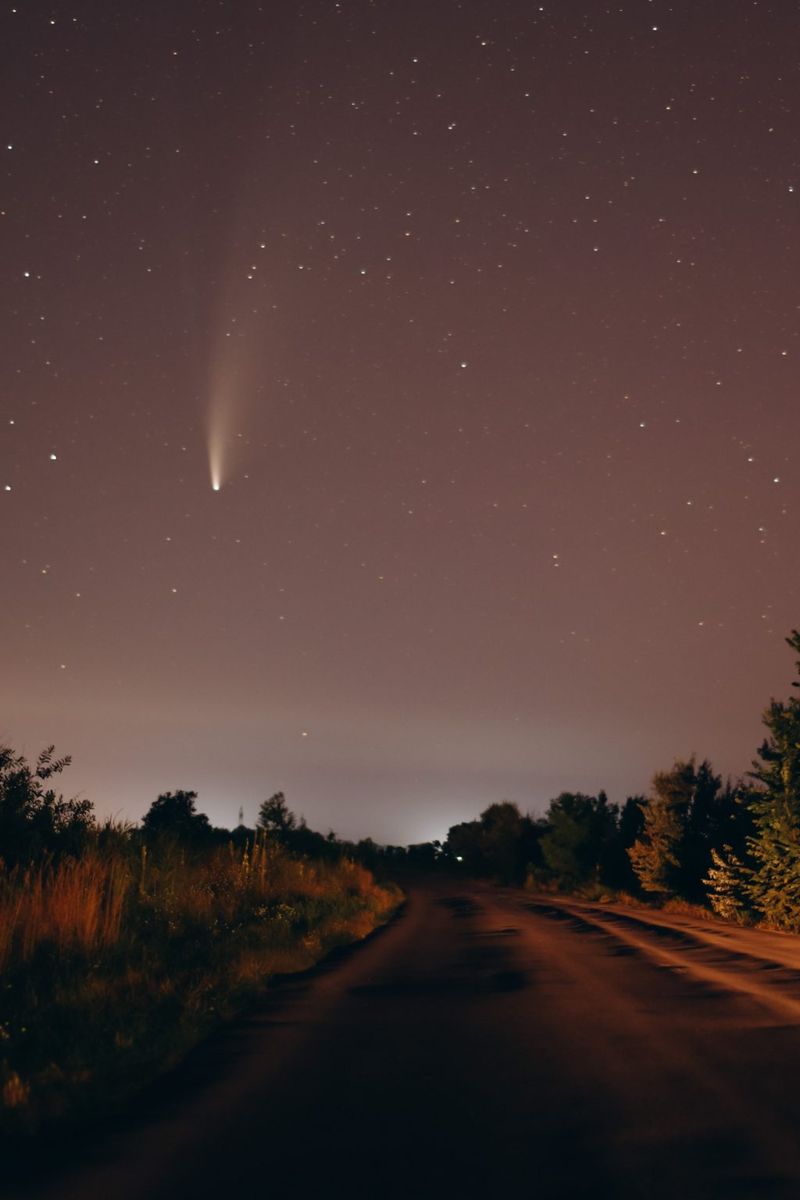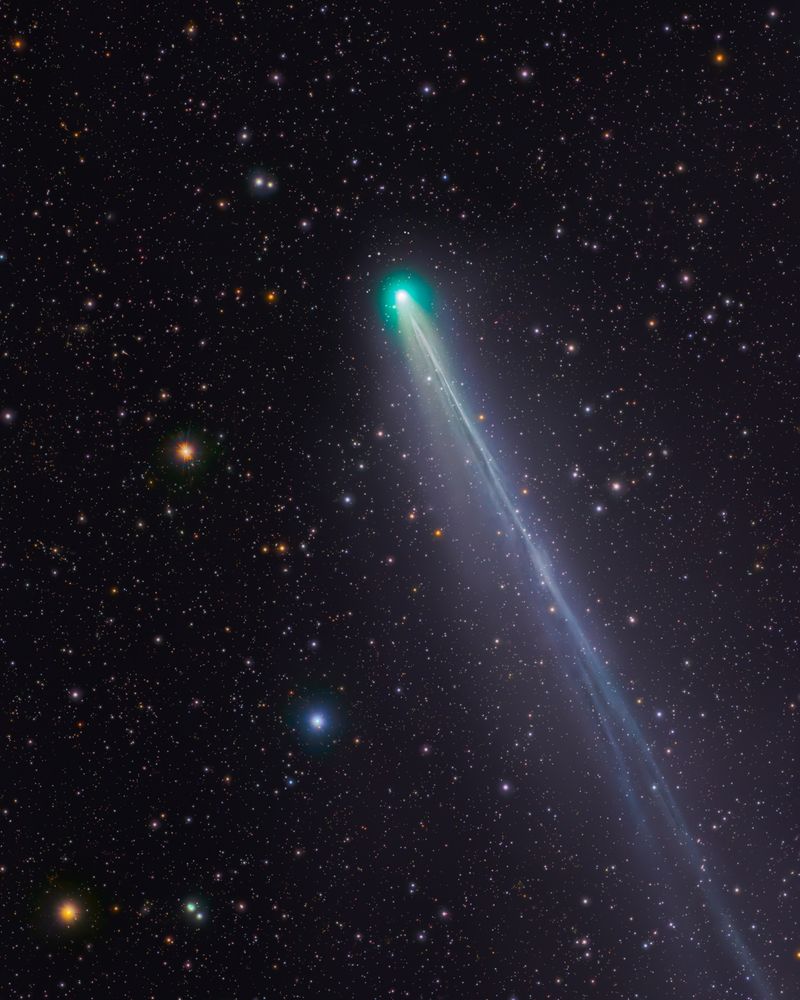October 2025 brings a cosmic surprise that hasn’t happened in generations: two brilliant green comets will light up the night sky at the same time. Comet Lemmon and Comet SWAN are racing past Earth right now, offering stargazers across the United States a double dose of celestial beauty. With the new moon creating perfectly dark skies around October 21, this is your chance to witness a spectacle that won’t return for over a thousand years.
A Rare Celestial Double Feature
Imagine looking up and seeing not one, but two glowing comets streaking across the darkness. That’s exactly what’s happening this October as Comet Lemmon and Comet SWAN grace our skies together. Comet Lemmon was discovered back in January 2025 and has been brightening ever since, while Comet SWAN surprised astronomers when it appeared last September.
Both visitors are making their debut in Northern Hemisphere skies, and their timing couldn’t be more perfect. Seeing two comets at once is incredibly uncommon—most people will never witness this in their lifetime. Amateur astronomers and casual sky-watchers alike are buzzing with excitement.
The greenish glow from both comets creates an otherworldly scene that photographs beautifully. Whether you’re a seasoned stargazer or just curious about space, this double feature is worth staying up late for.
When and Where to Look
Timing is everything when hunting for comets. Your best shot at spotting these cosmic travelers falls between October 20 and 23, 2025, especially around October 21 when the new moon keeps the sky extra dark. Head outside about 90 minutes after sunset when twilight has completely faded.
For Comet Lemmon, face northwest and scan the horizon near the Big Dipper and Arcturus. Comet SWAN hangs lower in the southwest, just below the bright star Altair. Binoculars or a small telescope will bring out amazing details, though truly dark locations might let you see them without any equipment.
Success depends heavily on clear weather, minimal light pollution, and an unobstructed view of the horizon. Download a star map app to help pinpoint their exact positions as they move nightly through the constellations.
The Science Behind Their Green Glow
Ever wonder why these comets shine green instead of white or yellow? The answer lies in their chemistry. When sunlight hits the icy nucleus of a comet, it releases gases including diatomic carbon—two carbon atoms bonded together.
This special molecule absorbs ultraviolet light from the Sun and re-emits it as a ghostly green glow visible from Earth. The fuzzy cloud surrounding each comet’s core, called the coma, is where most of this green light originates. Meanwhile, dust and ice particles create the long tails that stream behind them.
Scientists love studying these chemical signatures because they reveal what comets are made of. Each comet carries pristine material from the early solar system, frozen in time for billions of years until heat from the Sun releases it.
Comet Lemmon’s Once-in-a-Millennium Journey
Here’s something mind-blowing: Comet Lemmon takes roughly 1,150 to 1,350 years to complete one orbit around the Sun. That means the last time it passed through our neighborhood, Charlemagne was ruling Europe and Vikings were exploring new lands. Nobody alive today will ever see it again.
Discovered by the Mount Lemmon Survey in Arizona this past January, the comet has been steadily brightening as it approaches. On October 21, it will pass within 0.60 astronomical units of Earth—that’s about 56 million miles away. Astronomers predict it could reach magnitude 3.5 to 4.4, making it potentially visible to unaided eyes under dark skies.
The comet’s long orbital period means it originates from the distant reaches of our solar system, carrying ancient ice and rock.
Comet SWAN’s Mysterious Origins
While Comet Lemmon gets much of the attention, Comet SWAN has its own fascinating story. NASA’s Solar Dynamics Observatory spotted this wanderer on September 12, 2025, and it’s been putting on quite a show ever since. Its orbit suggests an origin in the Oort Cloud, a mysterious shell of icy objects at the very edge of our solar system.
SWAN will make an even closer pass than Lemmon, coming within 0.27 astronomical units of Earth on October 21—just 25 million miles away. Expected to brighten to magnitude 4, it displays a stunning bluish-green hue that intensifies as solar radiation energizes its gases.
The comet’s orbital period could stretch into tens of thousands of years, meaning this visitor is even rarer than its companion in the sky.
The Orionids Meteor Shower Bonus
As if two comets weren’t enough, October 2025 delivers a cosmic triple threat. The Orionids meteor shower peaks on the same nights as the comets’ best visibility, around October 20-21. These shooting stars are actually tiny debris particles left behind by the famous Halley’s Comet.
When Earth plows through Halley’s dusty trail each October, the particles burn up in our atmosphere at 41 miles per second, creating brilliant streaks of light. During peak activity, you might see 15 to 25 meteors per hour radiating from the constellation Orion.
The new moon phase ensures darkness won’t wash out the fainter meteors. Between watching for shooting stars and tracking two comets, your neck might get tired from looking up, but the celestial fireworks are absolutely worth it.
Photography Tips for Capturing Comets
Want to capture these cosmic visitors for posterity? You don’t need expensive equipment—just a camera that allows manual settings, a sturdy tripod, and patience. Start with a wide-angle lens (14-35mm works great) to capture both the comet and surrounding landscape.
Set your camera to manual mode, open the aperture as wide as possible (f/2.8 or lower is ideal), and use ISO 1600-3200. Experiment with exposure times between 10 and 20 seconds—longer exposures capture more light but may blur stars as Earth rotates. Use a remote shutter or timer to avoid camera shake.
Focus manually on a bright star or distant light, then reframe your shot. Take multiple exposures and review them on your camera screen, adjusting settings as needed. The best images often come from darker locations with interesting foreground elements.
Making the Most of This Sky Show
Preparation makes all the difference between disappointment and an unforgettable experience. Scout your location during daylight—find a spot away from city lights with clear views of both northwest and southwest horizons. Parks, rural areas, or designated dark sky sites work perfectly.
Arrive early and give your eyes 20 to 30 minutes to adapt to darkness. Avoid looking at phone screens or bright lights, which reset your night vision. October nights can be surprisingly cold, so dress in layers and bring blankets or camping chairs for comfort.
Consider making this a social event—astronomy clubs often organize group viewings, and sharing the experience makes it more memorable. Check weather forecasts beforehand and have backup dates ready. These comets won’t return for centuries, so don’t let this opportunity slip away into the cosmic void.
